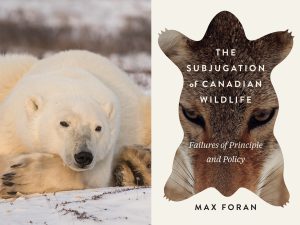Since 1958, the Polar Continental Shelf Program at Natural Resources Canada has supported leading edge research in the North, with 168 research and field projects underway in 2019 alone. The Shelf Program collaborates with Polar Knowledge Canada, Canada’s Department of National Defence, ArcticNet and The W. Garfield Weston Foundation on many of its projects.
Here are some of the most groundbreaking research projects from 2019.
Solving the mysteries of arctic migratory birds
Millions of migratory birds breed in the Arctic each summer, representing an important link between Arctic ecosystems and the rest of the world. Researchers know little about many of these species — they can’t tell why some populations decline while others rapidly increase, or how climate change is affecting their habitats and lives. Joël Bêty, from Université du Québec à Rimouski visited isolated study sites to interact with and monitor nesting birds, such as the cackling geese.The data collected will be added to already existing databases that track reproduction, survival and distribution of multiple species.
Lake Hazen contaminants
Environment and Climate Change Canada continued a multi-year study on the long-term impacts of contaminants at the Lake Hazen base camp in Nunavut. Located on northern Ellesmere Island in Quttinirpaaq National Park, Lake Hazen has been a scientific research base since 1957. Parks Canada employees and ECCC employees worked together to collect fish samples to continue the contaminant research which has been ongoing since 2003.
Biodiversity inventory of Dàadzàii Vàn Territorial Park
The remote Dàadzàii Vàn Territorial Park, Yukon, is 75 kilometres from the nearest community — and an important place to the First Nations in the area. The Government of Yukon, with help from PCSP, surveyed more than 50 sites in 2019 to find lesser-known species and collect samples of fungi, lichens and plants, to create a baseline database of what exists in the space.
Radio astronomy from Northern Canada
Hsin Cynthia Chiang from McGill University travelled to the McGill Arctic Research Station at Expedition Fjord on Axel Heiberg Island in Nunavut to assess the site’s potential for radio observations of the sky. They discovered that radio frequency interference was extremely low and that the FM band was clean, suggesting that the research station would make for one of the cleanest observing sites on the planet, surpassing the commonly-used South African and Western Australia deserts.
Investigating permafrost slumping and its impact
Permafrost slumping — a thaw that causes land to subside — is happening at alarming rates on Banks Island in the Northwest Territories. Community members are concerned about the impacts of slumping on fish habitats, water quality and on human safety as they travel across the land. Parks Canada researchers began to map, analyze and forecast this slumping in 2016, with a major reassessment project of 11 sites in 2019. The team determined there is significant risk to benthic invertebrates (organisms that live in the sediment of streams) and are making plans to address this in the future, though there is no plan currently in place.
Read the full 2019 report.
The Shelf Program has suspended logistics services for the remainder of the 2020 Arctic field season and the facility in Resolute, Nunavut remains closed until further notice due to public health guidelines surrounding the ongoing COVID-19 pandemic.





